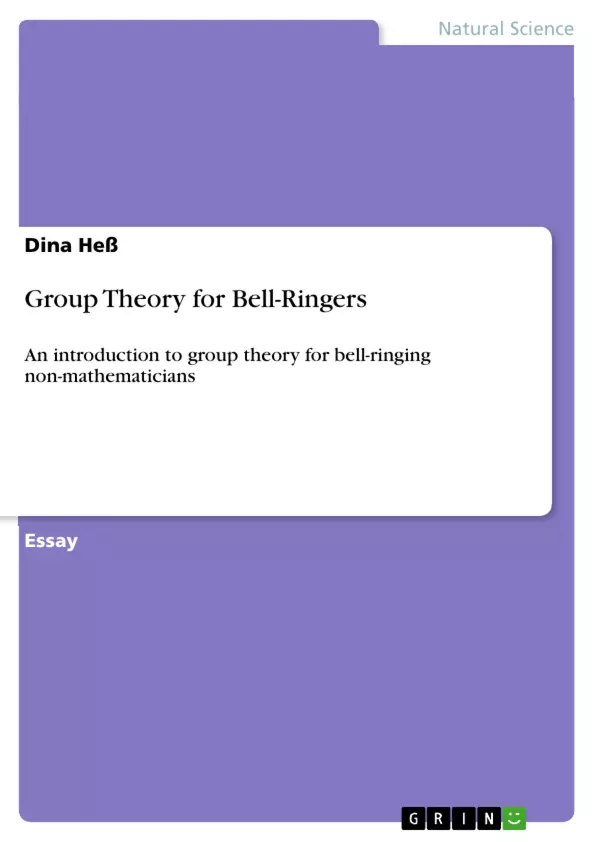The art of change-ringing has been practised, particularly in England, for over four hundred years but only recently mathematicians have taken an interest in the fact that this art can be described rather elegantly in mathematical terms. Surprisingly, the mathematical concept in question, group theory, is about a century younger than the applications of it in the ringing of changes as described thoroughly by Fabian Stedman in 1667.
In this essay groups will be introduced ‘as a tool for exploring’ the art of change-ringing and through bell-ringing introduce the mathematical concepts of sets, functions and groups.
Inhaltsverzeichnis (Table of Contents)
- Introduction
- Bell-ringing terminology
- Sets, functions, and operations
- Permutations and transpositions
- Groups and change-ringing
Zielsetzung und Themenschwerpunkte (Objectives and Key Themes)
This essay introduces the concept of group theory using the art of change-ringing as a practical example. It aims to explore the mathematical concepts of sets, functions, and groups through the specific context of bell-ringing. By demonstrating how change-ringing can be described using group theory, the essay aims to provide an accessible introduction to the mathematical concept.
- The history and principles of change-ringing
- The mathematical concepts of sets, functions, and operations
- Permutations and transpositions in change-ringing
- Group theory and its application to change-ringing
- The relationship between mathematics and music
Zusammenfassung der Kapitel (Chapter Summaries)
The essay begins by introducing the history and terminology of change-ringing, explaining how bells are numbered and the different types of changes that can be rung. It then delves into the mathematical concepts of sets, functions, and operations, using practical examples to illustrate their application. Permutations and transpositions are discussed in the context of change-ringing, showing how these mathematical concepts are used to describe the order in which bells are rung. Finally, the essay concludes by demonstrating how change-ringing forms a group in the mathematical sense, exploring the properties and rules of groups.
Schlüsselwörter (Keywords)
The main keywords and focus topics of the text are: change-ringing, group theory, sets, functions, permutations, transpositions, mathematical concepts, musical patterns, and algebraic structures. This work examines the relationship between mathematical concepts and the practical art of change-ringing, illustrating how abstract mathematical ideas can be applied to understand real-world phenomena.
- Quote paper
- Dina Heß (Author), 2011, Group Theory for Bell-Ringers, Munich, GRIN Verlag, https://www.grin.com/document/191260



